Here are our 16 top reasons Oregon and Washington need to re-think the proposed Interstate Bridge Replacement Project. The bloated size of the project and its $7.5 billion cost, and the availability of better alternatives, like a bascule bridge, call for rethinking this project, now.
- It’s not a bridge, it’s a freeway widening and interchange rebuilding project. Contrary to the project’s name, it’s not merely a “bridge replacement.” The bulk of the cost is widening 5 miles of freeway and rebuilding 7 major interchanges. IBR’s own “River Crossing Options” study says the proposed IBR bridge only costs $500 million.

- The budget is out of control: $7.5 billion. In 2020, the IBR was projected to cost a maximum of $4.8 billion. The price tag for the project jumped 54 percent in December, 2022. The total cost is now estimated at $7.5 billion, but ODOT has a long history of having its major projects end up costing twice as much as budgeted. Contrary to claims made by the IBR, recent construction cost inflation accounts for only $300 million of the more than $2.5 billion cost increase since 2020.
- A tunnel or bascule bridge would be vastly cheaper, avoiding the need to widen the freeway and rebuild intersections. IBR’s design will allow only 116 feet of navigation clearance, and IBR has refused to seriously consider either an immersed tube tunnel or lower level bascule bridge, both of which would eliminate most or all bridge lifts, and eliminate the need to rebuild intersections on I-5. The I-95 Woodrow Wilson Bridge in Washington DC is recently constructed bascule, and carries twice as much traffic as the I-5 bridges.
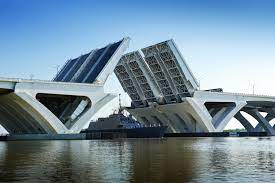
- Its really a 12-lane wide freeway. The IBR likes to describe the project as just adding “auxiliary lanes” to I-5, but a close look at its actual plans shows it will build a 164-foot wide highway bridge–enough for as many as 12 lanes. Once built, ODOT and WSDOT can easily re-stripe this very wide structure as a 12-lane roadway.
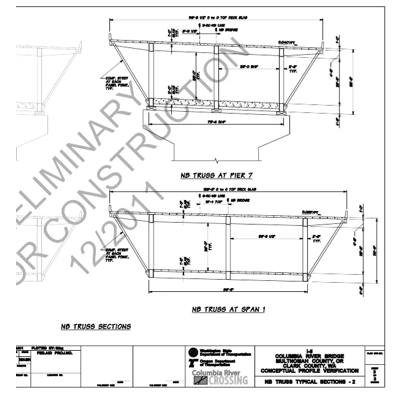
- ODOT is ignoring the Coast Guard’s direction. The Coast Guard, which has authority to regulate bridge height–says that IBR’s bridge needs to have a 178-foot clearance over the Columbia River. With the CRC, the failure to follow Coast Guard guidance resulted in a costly year-long delay as the project was redesigned.
- ODOT’s high, fixed span crossing creates dangerous and expensive elevated roadways and steep on-and-off ramps. The IBR would have a main span with a grade of 4 percent, higher than almost every interstate bridge in the US, and ramps would have 6-7 percent grades. The steep grades will slow trucks and create dangerous conditions in winter weather.
- Planned tolls of up to $5.69 each way will permanently reduce traffic to less than 90,000 vehicles per day (from 135K today). IBR has refused to release its proposed toll rates. Documents obtained by public records request show IBR is looking at tolls as high as $5.69 each way at the peak hour. According to the Investment Grade Analysis performed for the Columbia River Crossing in 2013, even $3 tolls would permanently reduce traffic on I-5 to less than 90,000 vehicles per day–dramatically below its current traffic level of 135,000.
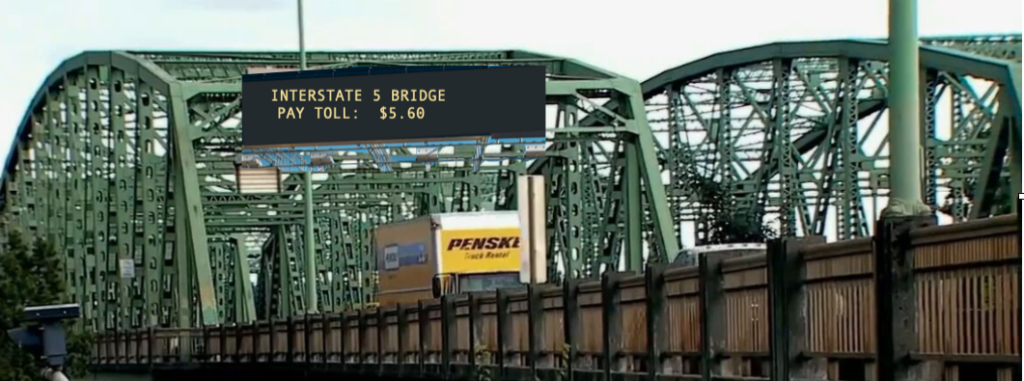
- High IBR tolls would produce gridlock on I-205. The IBR project plans to toll the new I-5 bridge, but not the parallel I-205 Glen Jackson Bridge. The Investment Grade Analysis prepared for the Columbia River Crossing in 2013 concluded that this would divert tens of thousands of vehicles to I-205, producing gridlock on the I-205 bridge.
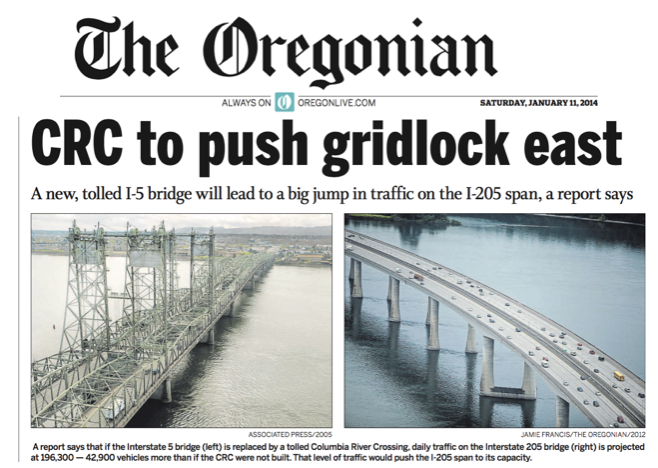
- ODOT has ignored its own expert panel which recommended breaking the project into three independent phases. In 2010, Governors Kulongoski and Gregoire appointed a panel of national bridge and highway experts to review the Columbia River Crossing. They recommended that the project be broken into three separate, independent phases, to minimize financial risk. They also recommended eliminating one or more interchanges to improve traffic flow, reduce cost and simplify bridge design.
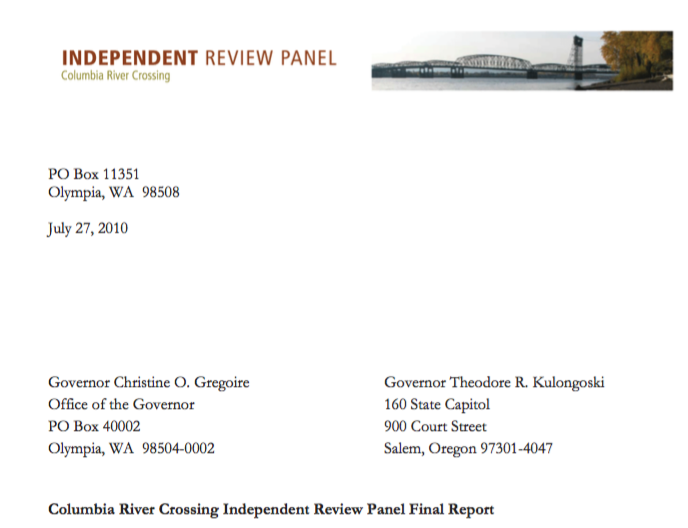
- IBR traffic projections have been proven dramatically wrong: They grossly over-estimate future traffic levels on the existing bridge, which is capacity constrained. The CRC FEIS predicted I-5 traffic growth of 1.3 percent per year; actual growth was 0.3 percent per year through 2019. They also fail to accurately predict future traffic levels. The independent Investment Grade Analysis in 2013 showed that the IBR forecasts overstated future I-5 traffic levels by about 80,000 vehicles per day, leading to the design of a grossly over-sized project.

- IBR staff altered the output of Metro’s traffic models, and increased predicted peak hour traffic on the existing I-5 bridge above that predicted by the Metro model, and in excess of the actual physical capacity of the bridge. This so-called “post-processing“–which isn’t documented according to ODOT’s own analysis procedures–inflated no-build traffic volume artificially worsened predicted future congestion, and created a false baseline for assessing the need for and impacts of the proposed bridge widening.
- The IBR project mostly benefits Washington residents. According to Census data produced by IBR, approximately 80 percent of daily commuters across the Columbia River are Washington residents. According to a license plate survey conducted for the two states, twice as many Washington cars use the I-5 bridge as do Oregon cars. Yet Oregon will have to pay just as much as Washington state, plus pay for the entire cost of the $1.45 billion Rose Quarter project (which is heavily used by Washington commuters).
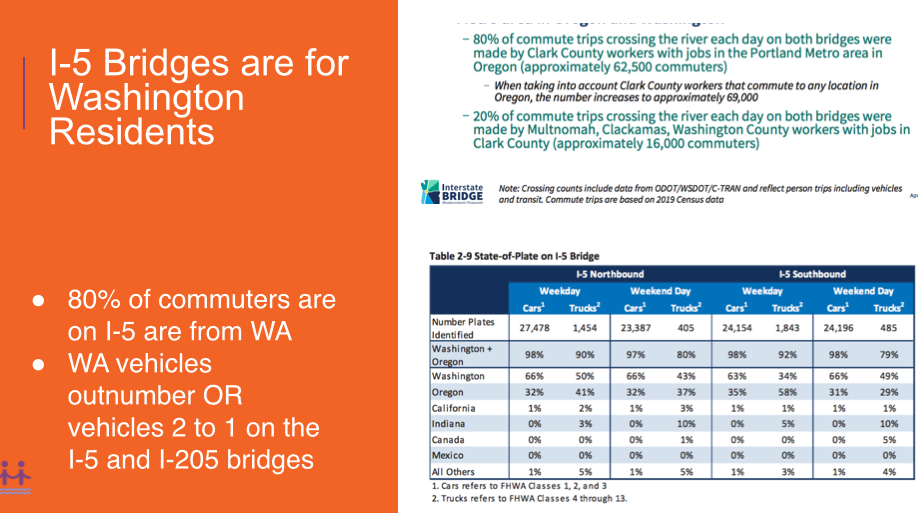
- IBR has falsely portrayed the income, race and ethnicity of typical bridge users. The median peak hour drive-alone commuter from Clark County Washington to jobs in Oregon has a household income of $106,000. About 86 percent of these commuters are non-Hispanic whites. These commuters are whiter and have higher incomes that the rest of the Portland metropolitan area, and are half as likely to be people of color as the region’s population.

- IBR has no meaningful cost controls. ODOT & WSDOT claimed in legislative testimony in December 2022 that future cost escalation would be managed using a “Cost Estimate Validation Process (CEVP)” that they say that had already completed. A public records request showed that no documentation existed for the CEVP.

- IBR has put off doing an “Investment Grade Analysis” which will be required for federal TIFIA loans andtoll bonds. The investment grade analysis done for the CRC showed that traffic would be dramatically lower, and tolls would have to be dramatically higher than the figures ODOT and WSDOT used to sell the CRC.
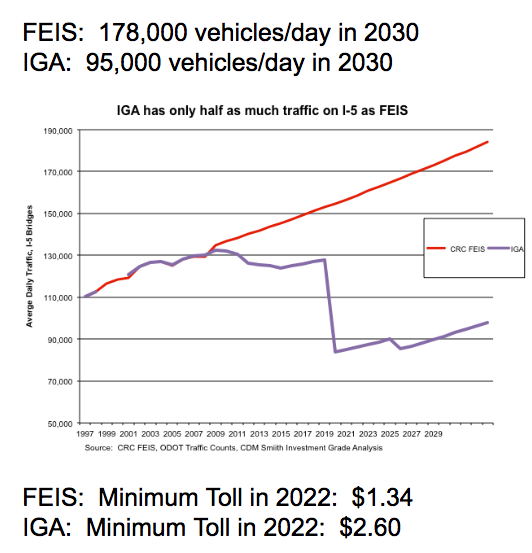
- A massive IBR will be a visual blight on Vancouver’s revitalized waterfront, and a massive viaduct across Hayden Island. The elevated approaches required by IBR’s 116 foot high fixed span are the equivalent of three Marquam Bridges side by side as they cross the waterfront in downtown Vancouver. Seattle just spent several billion dollars to remove a similar waterfront eyesore.
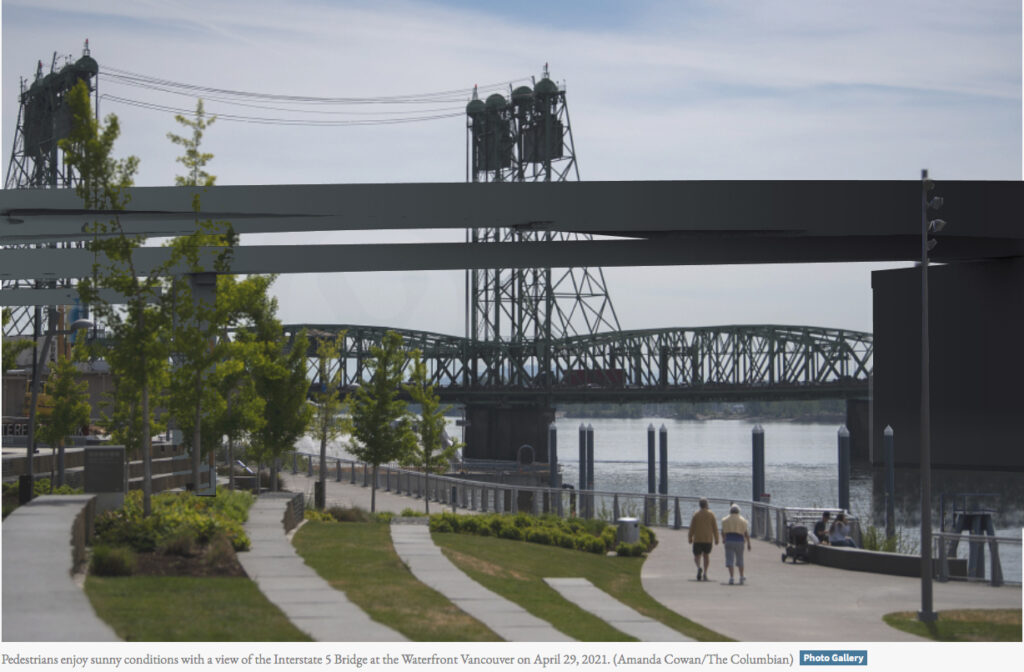
What we should do instead.
- Refocus the project on replacing the bridge, not widening the freeway
- Re-appraise low cost options to a high, fixed span (a bascule bridge or immersed tube tunnel) that could use existing approaches and eliminate the expense of rebuilding interchanges and creating massive elevated viaducts.
- Right-size the bridge’s capacity to reflect the traffic levels that can be expected with tolling
Note: This commentary has been updated to include additional images and links.

